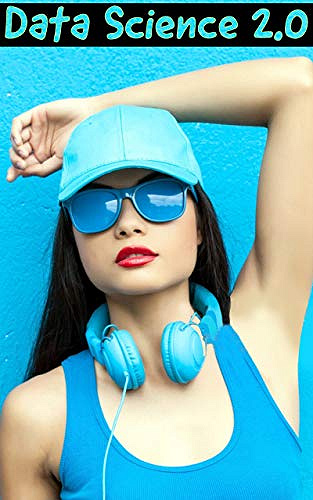 Login
Login
 Categories
Categories
-
![Ebook]()
-
Home
/
-
Ebooks
/
-
Engineering and Technology
/
-
Data Science 2.0 With Raspberry Pi 3 and Arduino: Live Robotics Projects using Python 3.7


Data Science 2.0 With Raspberry Pi 3 and Arduino: Live Robotics Projects using Python 3.7
- Category: Engineering and Technology
- ISBN: N/A
- Views: 62
- Posted on: 10/05/2021 11:11
Nowadays, a growing number of people talk about data science and its various merits. However, many people have a hard time distinguishing it from business intelligence and statistics. This book the Data Science Process with best examples. And also explains several Data Science transform Utilities and functions using Python 3.7. The second section of this book explains how to create games using Raspberry Pi 3 and Python 3.7. The third section of this book explains how to create LCD Projects using Raspberry PI 3 and Arduino. The fourth section of this book explains how to Navigate Indoor Robots using ROS. The fifth section of this book explains how to use Natural Language Processing for Chatbots. The last section of this book explains how to create a Car Racing game Using Deep Q-Learning.
3.Interactive Usage of Python 3.7
5.Scrapy and Scraping in Python 3.7
6.Database operations in Python 3.7
9.Create LCD Projects using Raspberry PI 3
11.Create LCD Projects using Arduino
12.Create Smartwatch using Arduino
13.Navigating Indoor Robots using ROS
14.Raspberry Pi Robot and Neopixels
15.OpenNLP project and Data Science
16.Natural Language Processing for Chatbots
17.Car Racing Using Deep Q-Learning
18.Files and File systems in Raspberry Pi
Data Science can be seen as the interdisciplinary field that deals with the creation of insights or data products from a given set of data files (usually in an unstructured form), using analytics methodologies. Data science is not a guaranteed tool for finding the answers to the questions we have about the data, though it does a good job at shedding some light on what we are investigating. For example, we may be interested in figuring out the answer to “How can we predict customer attrition based on the demographics data we have on them?”
The Python data science stack is an informal name for a set of libraries used together to tackle data science problems. There is no consensus on which libraries are part of this list; it usually depends on the data scientist and the problem to be solved. We will present the libraries most commonly used together and explain how they can be used. In this chapter, we will learn how to manipulate tabular data with the Python data science stack.
Python, admittedly, is not the first language that comes to mind when you think of video game programming. That being said, it is used in some of the largest games out there – Battlefield is a great example of a game that is on PC and consoles that uses some Python. Python is a pretty good choice if you are looking to learn the core concepts and even create your own games – whether for fun, to share with friends, or as part of your portfolio. Python is much easier to learn than C++ and, if you made it this far into the book, you already have a pretty good handle on coding basics
Scrapy is a comprehensive Python library for crawling websites and extracting structured data from websites, which is also quite popular. This book explains Scraping in Python with the best examples. It deals with both the HTTP and HTML side of things and provides a command-line tool to quickly set up, debug, and deploy web crawlers.
Our task in this chapter is to create a reliable navigation system for our robot that is adaptable to our mission of cleaning a single room or floor of toys, and that uses the sensors we already have. We require the Robot Operating System (ROS) for this chapter. This book uses the Kinetic Kame release: kinetic/Installation - ROS Wiki.

 Data Science 2.0 With Raspberry Pi 3 and Arduino: Live Robotics Projects using Python 3.7
Data Science 2.0 With Raspberry Pi 3 and Arduino: Live Robotics Projects using Python 3.7